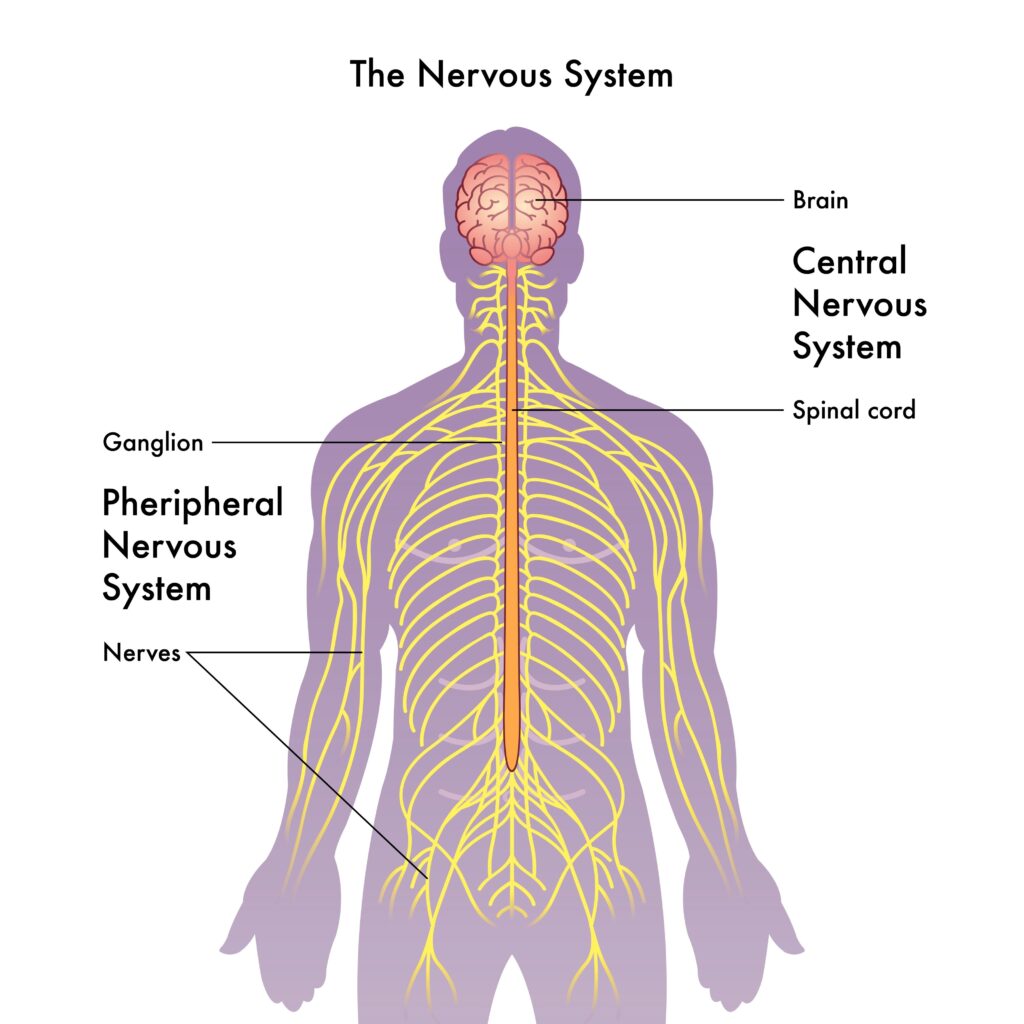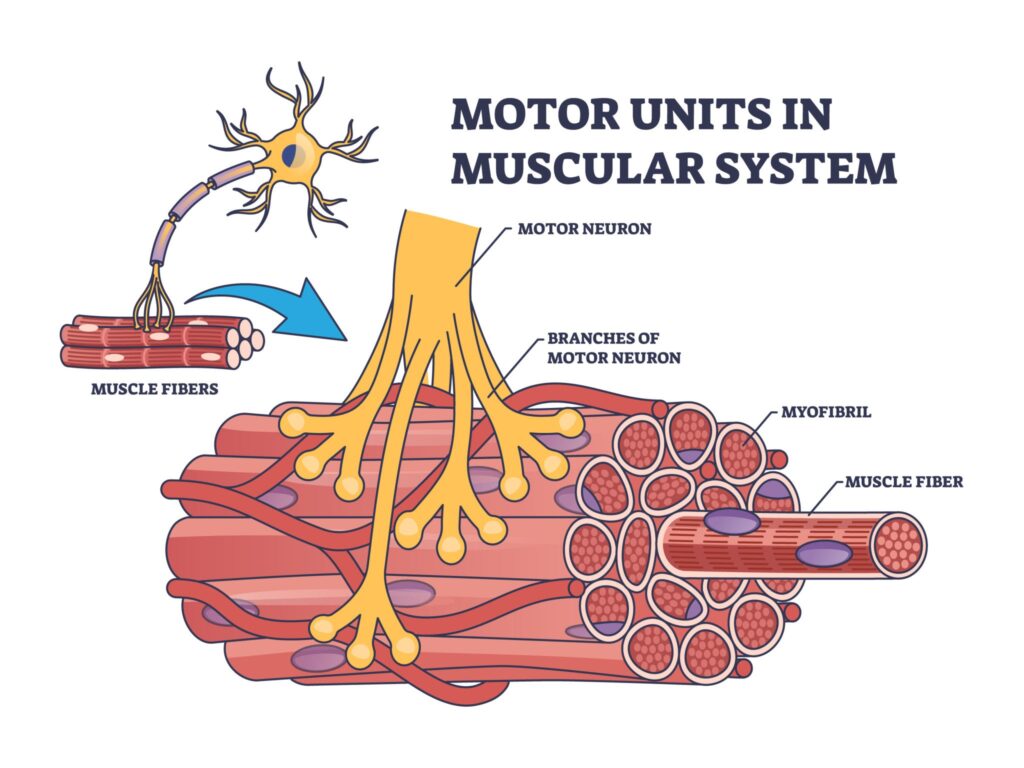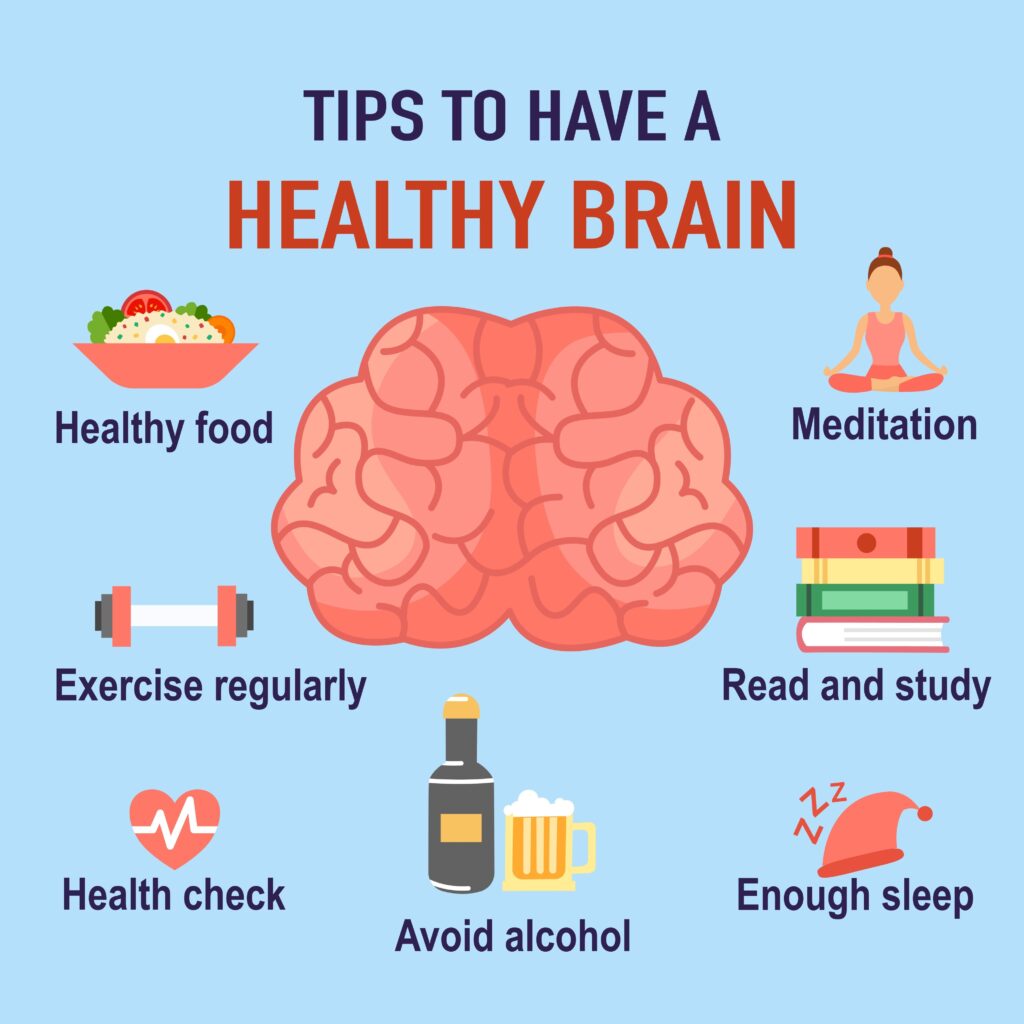How the Nervous System Links the Mind, Body, and Spirit for Total Well-Being
Have you ever wondered how your thoughts move your body, or how emotions seem to affect your health? The nervous system and mind connection is the hidden bridge linking your spiritual, mental, and physical life. Through this intricate system of brain and nerves, the mind directs every sensation, motion, and choice. In this guide, you’ll discover how the nervous system works, why balance between thought and nerve energy matters, and how mindful living can strengthen this vital connection between body and spirit.
How the Nervous System Works as the Body’s Control Center
Your body possesses no power to move itself—it serves as a collection of instruments the mind uses to secure various kinds of knowledge and enjoyment. The organs through which the mind controls the body are the brain and nerves, forming an elegant system of communication and command.
The brain rests within the skull, divided into the large upper brain and the small lower brain. The spinal marrow runs from the brain through the spine, or backbone. From each side of the spine, large nerves branch out into innumerable smaller pathways reaching every portion of your body.

Understanding how the nervous system works begins with recognizing its two types of nervous matter: gray matter, which originates and controls a nervous fluid that imparts power of action, and white matter, which conducts this fluid to every part of your body. When you feel cold air on your skin, the nerves of sensation report to the brain, and thus to your mind, that your body grows cold. Your mind then knows you need more clothing and wills your eyes to look for it and your hands and feet to move to get it.
This vital energy flow connects directly to your overall vitality and health capacity, as explained in the vital capacity law of health and energy, which governs how efficiently your body utilizes its energy resources.
Brain and Nerves — The Instruments of the Mind
The brain and nerves function for mind and body are sophisticated instruments rather than independent actors. Your brain and nervous system divide into distinct portions, each performing different offices and acting independently of the others.
One portion of your brain engages in thinking, in feeling pleasurable or painful emotions, and in choosing or willing. The nerves running to your nose, ears, eyes, and tongue enable seeing, hearing, smelling, and tasting. The front portion of the spinal marrow and its connected nerves handle sensation—the sense of feeling that extends over your whole body through the elaborate network of nerves in your skin.

The back portion of the spinal marrow and its branches move those muscles in all parts of your body that your will or choice controls. These operate as the nerves of motion. Though the nerves of sensation and nerves of motion start from different portions of the spine, they unite in the same sheath or cover in the muscles. Every muscle moves by nerves of motion, while alongside this nerve, in the same sheath, sits a nerve of sensation.
According to recent neuroscience findings on how the brain communicates with body organs, this intricate mind-body communication system operates far more dynamically than previously understood, with the brain constantly receiving and sending signals that shape both physical health and mental states.
Voluntary and Involuntary Nerves Explained
Maintaining nervous system health requires understanding of the distinction between voluntary and involuntary nerve functions. All the nerves of motion and sensation connect with that part of your brain used when you think, feel, and choose. Through this arrangement, your mind knows what every part of your body needs through the nerves of sensation, then acts through the nerves of motion.
Next comes the nerves of involuntary motion, which move all those parts of your head, face, and body used in breathing and other operations connected with it. Through these nerves, you continue to breathe when asleep, whether you will to do so or not. Some nerves of voluntary motion mix with these, enabling your mind to stop respiration or regulate it to a certain extent. However, your mind cannot stop breathing for any great length of time.
Understanding the benefits of deep breathing for nervous system balance reveals how conscious control of this automatic function can profoundly influence your overall nerve health and mental clarity.
Another large and important system of nerves—the sympathetic or ganglionic system—consists of small masses of gray and white nervous matter that function as miniature brains with nerves running from them. These ganglia arrange themselves on each side of the spine, while small nerves from the spinal marrow run into them, uniting the sympathetic system with the nerves of the spine.
The ganglionic system carries on the circulation of blood, the action of capillaries, lymphatics, arteries, and veins, together with the work of secretion, absorption, and most of the internal functioning of your body that proceed without any knowledge or control of your mind.
When the Mind Overworks the Nerves
Your brain and nerves can suffer from overwork and can also deteriorate from want of exercise, just as muscles do. Maintaining nervous system health demands that you exercise the several portions sufficiently while ensuring no part becomes exhausted by over-action.
When you greatly exercise that part of the brain employed in thinking, feeling, and willing through hard study, excessive care, or intense emotion, blood flows to the brain to supply it with increased nourishment, just as it flows to muscles when you exercise them. Over-exercise of this portion causes engorgement of the blood vessels, sometimes indicated by pain or a sense of fullness in the head.
More often, the result manifests as a debilitating drain on the nervous system, which depends for its supply on the healthful state of the brain. The brain operates like a fountain of supply for the nervous fluid, which flows to all the nerves and stimulates them to action. Some brains possess a larger fountain, some a smaller one, so that a degree of mental activity that would entirely exhaust one person would make only a small and healthful drain upon another.
A scientific study on how the mind-body connection is built into the brain demonstrates that specific brain networks integrate cognitive and physical processes, explaining why mental stress manifests as physical symptoms and why emotional states directly influence bodily functions. Learn more on on our blog on mastering mental discipline to control your mind.
The excessive use of certain portions of your brain withdraws nervous energy from other portions, so one part becomes debilitated by excess and the other by neglect. For example, you may exhaust brain power in excessive use of the nerves of motion through hard work, leaving little for any other faculty. Conversely, the nerves of sensation and thinking may withdraw nervous fluid from the nerves of motion, debilitating the muscles.
Understanding how the nervous system works in this delicate balance helps you recognize when mental strain depletes your physical energy or when physical exhaustion clouds your mental clarity. Applying mental discipline techniques to restore nervous system calm becomes essential for maintaining this equilibrium.
Strengthening the Nervous System and Mind Connection
Every portion of your body receives nerves of sensation from the spine and also branches of the sympathetic or ganglionic system. This creates a sympathetic communication between the several parts of your body and enables your mind to receive through the brain some general knowledge of the state of your whole system.
This explains why when one portion of your body suffers disease, other portions sympathize. For instance, if one part of your body experiences illness, the stomach may lose all appetite until the disease resolves. All operations of the nervous system perform through the influence of the nervous fluid generated in the gray portions of the brain and ganglia.

Maintaining nervous system health through practical approaches strengthens this vital nervous system and mind connection. When you exercise the nerves of sensation extensively while exercising the nerves of motion only slightly, one weakens by excess of exercise and the other by want of it. Experience shows that proper exercise of the nerves of motion reduces any extreme susceptibility of the nerves of sensation, while neglect of such exercise produces excessive sensibility in the nerves of sensation.
Developing mindful control of thought to improve mind-body balance offers powerful tools for regulating nerve energy distribution. When you consciously direct your attention and mental energy, you influence how your nervous system allocates its resources across different functions.
Cultivating Harmony Between Mind and Nerves
The brain and nerves function for mind and body operates most effectively when you develop all portions of the brain through appropriate exercise of all your faculties of mind and body. Some animal propensities may be indulged to such excess that they produce a constant tendency of blood to a certain portion of the brain and to the organs connected with it, causing constant and excessive excitement that finally becomes disease.
Sometimes paralysis of this portion of the brain results from complete exhaustion of the nervous fountain and the overworked nerves. Similarly, the thinking portion of the brain may become so overworked that it drains nervous fluid from other portions, which then become debilitated by the loss. The overworked portion itself may become diseased or paralyzed by the excess.
How the nervous system works reveals that whenever a nerve is cut off from its connection with these nervous centers, its power vanishes, and the part it served becomes lifeless and incapable of motion. This demonstrates the profound importance of maintaining nervous system health through balanced living.
The necessity for equal development of all portions of the brain through appropriate exercise of all your faculties profoundly influences your happiness and well-being. View your nervous system as sacred—the spiritual organ of communication between mind and body that translates thoughts into reality and sensations into consciousness.
By understanding the nervous system and mind connection, you empower yourself to create harmony between thought and action, emotion and physical response, spiritual awareness and bodily health. This integration forms the foundation of true holistic wellness.
Frequently Asked Questions
What is the connection between the mind and nervous system?
The nervous system acts as the communication network between your mind and body. It translates thoughts and emotions into physical responses through a complex system of brain signals and nerve impulses. This connection allows mental states to influence physical health directly.
How can I strengthen my nervous system naturally?
You strengthen nerve function by practicing deep breathing, regular exercise, balanced rest, mindfulness, and proper nutrition. These habits stabilize nerve energy and enhance your mind-body harmony, supporting both mental clarity and physical vitality.
Can mental stress weaken the nervous system?
Yes. Chronic mental or emotional stress depletes nerve energy, leading to fatigue, irritability, and poor concentration. Balancing mental activity with rest, nature exposure, and breathing exercises supports nervous resilience and restores healthy nerve function.
Ready to deepen your understanding of mind-body wellness? Explore our complete library of guides on conscious living, mental discipline, and holistic health at Pathway to a Healthy Lifestyle.
